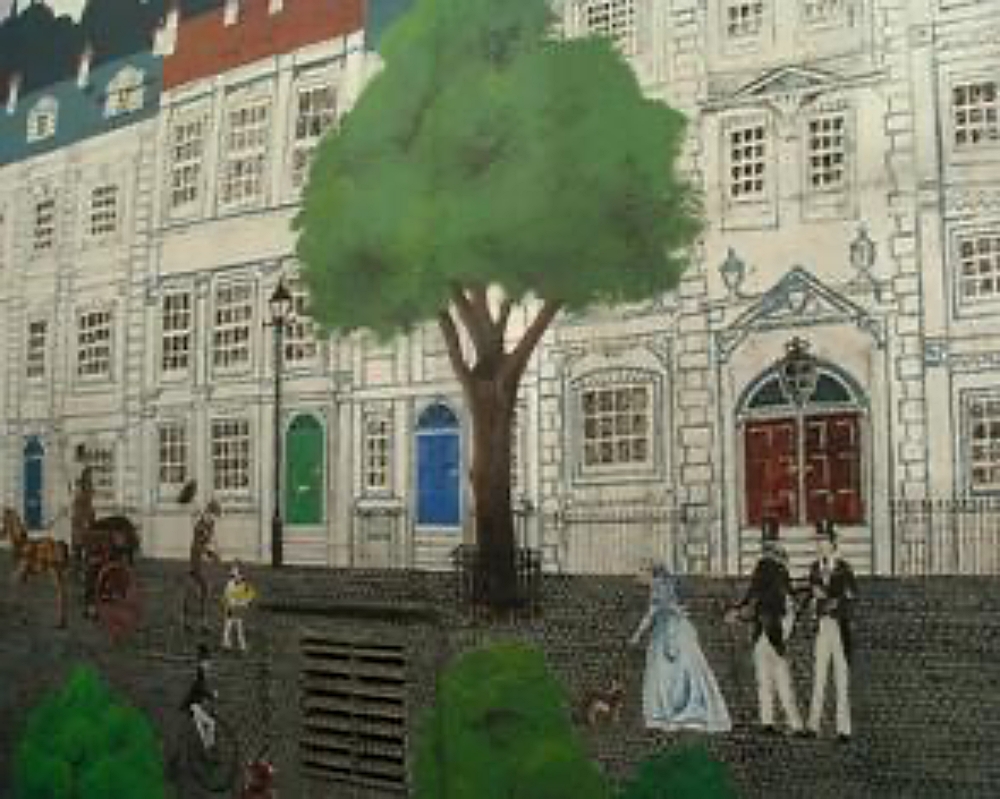Home comforts for a Princess
Worthing consisted of only 27 houses and seven of those were red brick homes on the west side of what we know as Montague Place. By the early 1800s, these had been replaced by an elegant terrace, much of which is still identifiable today, despite conversion during the last century from gentrified homes to commercial usage. Freddie Feest recalls their fascinating history.
FOR many years, the residents of West Terrace – as Montague Place was originally known – enjoyed a wide private lawn that ran from their front doors to houses on the east side of what later was to become a separate thoroughfare, Bath Place.
By 1850, Montague Place was dominated by Sumner House at its northern extremity, while a flimsy groyne forming the southern boundary offered scant protection from the sea. On the seaward side of the groyne was a row of pleasant little grass plots belonging to the occupiers of houses on the seafront.
These were removed in the 1860s, when the seafront parade was raised to its present level to prevent recurrent flooding of the roadway – by then proving a serious deterrent to Worthing’s development.
But let us return to the summer of 1798 and “an event of the greatest consequence to the town”, the lengthy stay of Princess Amelia, daughter of George III.
The Princess arrived in Worthing with her retinue on August 1, 1798.
Unfortunately, the town lacked a single house considered adequate for a princess, so instead, the royal party occupied two houses hurriedly converted into one and situated conveniently close to the beach.
Next day, the Derbyshire Militia, 120 strong, arrived from Clapham Common and encamped nearby to serve as a bodyguard.

A Mr Strynger, who lived in Sumner House at the north end of Montague Place, curried royal favour by offering his lawn “for the accommodation of the Princess when the tide prevented her from going on the beach”.
Several times while Princess Amelia was staying here the Prince of Wales (“Prinny”) rode or drove from his palace at Brighton to visit his sister.
Meanwhile, builders and speculators, shrewdly aware of the benefits that visits by the Prince of Wales had conferred on Brighton – particularly his famous Royal Pavilion – hoped Princess Amelia’s stay in Worthing would lead to something similar happening here.
Unfortunately, the hoped-for expansion of the town did not take place at the speed or on the scale anticipated. Following a brief spell of prosperity, there was a depression, for these were the dark days of the Napoleonic War and the threat of a French invasion was never far away.
During that period, a company of regular soldiers was stationed at barracks in the High Street, “to deal with any attempt at a landing”, while an enthusiastic Volunteer Corps was formed under the command of a Captain Margesson.
Happily, they were never called into action and their only excitement was when a hayrick caught fire at Broadwater, sparking off a false alarm that the French had landed!
Montague Place remained at the geographical centre of the town for many years and, sure enough, a French force did eventually arrive – but not for another two centuries.
Then it was to set up a visiting French produce market, which has since become one of the town’s most popular open-air shopping attractions.
IT’S IN THE POST – Freddie Feest’s postbag
JCP of Worthing writes: “You recently referred to the cricket match played on Broadwater Green, between Sussex and an All-England team, in 1837. It was probably the most prestigious game of cricket ever played there but was it also the first?”
Freddie Feest replies: Broadwater Green existed long before first appearing on a printed map in 1725 but it was not always the attractive triangle of recreational grassland enjoyed today.
From 1810, an area at the north end was a gravel pit and until about 1900 there was a pond in the north-west corner.
In earlier days, this pond was the location of the last ducking stool in the Worthing area, used to punish minor infringements of local laws or traditions. Malicious gossipers were the most popular “victims”. They were fixed on the stool, fully clothed, and completely ducked several times in the filthy water!
By the mid-1830s, however, Broadwater Green had been established as a popular centre for the more civilised pastime of cricket.
To my knowledge, the earliest recorded cricket match on Broadwater Green was played in 1805, between the London Gentlemen and a combined team of the Gentlemen of Worthing, Brighton and Shoreham.
In those days, cricket was often played for money and on this occasion, each side put up 500 guineas as the prize – a phenomenal sum at the time – and the visitors from London won!
Broadwater Cricket Club was formed in 1771, 84 years before Worthing Cricket Club.
From John Grant, historian of the Worthing Excelsior Cycle Club, founded in 1887:
“Regarding your very interesting story and picture of the Haffenden family of Goring and their unusual “tandem-towed transport”, a Worthing Excelsior member from early Edwardian times used to take his young lady for rides in an identical chair attached to his single bicycle.